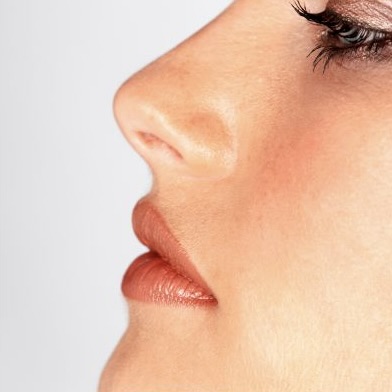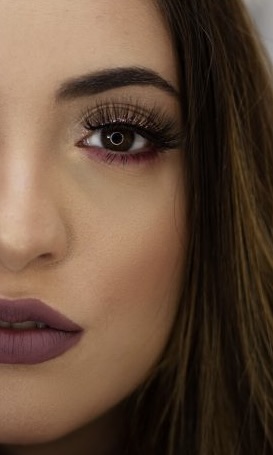
If you had rhinoplasty and are displeased with the results, you may be thinking about revision rhinoplasty or a secondary rhinoplasty. However, before you decide to have another procedure, it’s essential to know the possibility of complications and the risks.
Many plastic surgeons say that revision rhinoplasty is one of the most complex facial procedures, more so than a traditional facelift or eyelid lift. In addition, complications are more common with this procedure than with the previous nose surgery, so it’s crucial to choose a board-certified plastic surgeon for your procedure.
Some of the factors your surgeon needs to consider about your revision rhinoplasty are:
- Scar tissues: Rhinoplasty surgery usually leaves behind significant scar tissue that can distort the nose anatomy, making it unrecognizable to a less skilled surgeon.
- Cartilage available: After the surgeon opens the nose, it may need reshaping, but there may be insufficient septal cartilage to do this. Cartilage grafts will be required, but grafts don’t always suit what is needed to rebuild the nose.
- Skin condition: Scarring from previous surgeries can affect the skin, too.
Below is more information about secondary nasal surgery and potential complications.
Revision Rhinoplasty Overview
Revision rhinoplasties are done to refine, redo, or redefine a previous rhinoplasty functional or aesthetic results. This procedure may be done after you have outgrown the results of rhinoplasty done during your adolescence.
Other people may decide to have revision rhinoplasty if they had a closed procedure that didn’t provide their desired outcome.
One important thing to know about this procedure is that the revision surgery will use an open approach. This means the surgeon will make incisions that provide full access to the underlying nose structures and tissue.
This is because there is usually scar tissue, and opening the nasal area will give you a chance for the best possible outcome.
The surgeon will make an incision under the tip of the nose, which is then pulled backward. Then, the flap is pulled off the nose for as much exposure as possible, so work can be done to repair the bridge, nasal tip, nostrils, or nasal septum.
The goal of revision rhinoplasty is to obtain ideal facial balance and harmony by altering the nose’s size, shape, or angle.
Revision Rhinoplasty Complications
Complications in revision rhinoplasty are higher than primary rhinoplasty nasal surgery, but the overall rate of issues is still low. It’s essential to choose a highly skilled rhinoplasty surgeon to ensure you get the best results.
The most common complications are:
Bleeding
Blood vessels can be damaged when you have plastic surgery procedures done on the nose. Most rhinoplasty patients only lose a small quantity of blood, but a few experience significant blood loss.
Unless you have a bleeding disorder, the bleeding rarely rises to the level of needing hospital care or a blood transfusion. Most patients with this problem can address it with nasal packing for 24 or 36 hours.
Note that blood-thinning drugs can cause bleeding, so you should avoid using various medications and herbal supplements before revising rhinoplasty. Your doctor will advise you about any medicines that you should stop taking before your rhinoplasty procedure.
Anesthesia Reactions
Surgery usually involves general anesthesia, and there are always risks of complications. This is why you should make sure that your surgeon uses a highly skilled anesthesiologist for your procedure.
Nasal Airway Blockage
As the nasal contours are changed, you may need some alterations to the septum. This can lead to swelling and numbness that may cause temporary breathing difficulties. The problem should resolve as the swelling goes down and you adapt to your new nose.
Infection
The blood supply to the nose is plentiful, so this is a rare complication. However, damaged nasal lining, previous drug use, or scarred soft tissue can lead to infections in a few cases.
To prevent potential infections, you should watch for symptoms that include excessive swelling, fever, or odorous discharge from the nose.
Dissatisfaction
Correcting a prior rhinoplasty is always complex, and you may be dissatisfied with the outcome. However, this can be minimized by working closely with your surgeon to ensure that your expectations are clear and there is a clear plan before surgery.
Be sure that the results your surgeon discusses matches your expectations.
 Revision Rhinoplasty Recovery
Revision Rhinoplasty Recovery
After your surgical procedure, you will have swelling and bruising for up to seven days. However, you may experience less discomfort than with your previous surgery because you had the nose operated on before.
Your surgeon will put a splint and tape on the nose and possibly silicone splints. The stitches and bandages will be taken off after about one week. After that, a revision rhinoplasty patient can go back to work and most activities after the swelling and bruising have subsided.
Initial results are visible immediately but will get better as swelling fades and the nose heals. Remember to wait until you see the final results after your rhinoplasty recovery before you compare results to how you looked before.
Rhinoplasty Surgery FAQs
Are nasal bones uneven after rhinoplasty?
Postoperative swelling and tenderness are common after rhinoplasty, as with any surgery. Asymmetry in swelling between sides is typical and does not necessarily indicate a problem with nasal bones.
What causes nasal obstruction?
In revision cases, deviation of the nasal septum and deficiencies in upper lateral cartilages often lead to internal valve collapse. Cartilage grafts, known as “spreader grafts,” are utilized to widen this narrowed area and restore proper nasal function.
Book Your Dallas Rhinoplasty Procedure Today
Interested in a rhinoplasty revision or reconstructive surgery in Dallas? Schedule an appointment with plastic surgeon Dr. Raja Mohan today. He will go over your goals, medical history and help you decide if rhinoplasty is a good choice for your situation. It is always a good idea to speak with a qualified board plastic surgeon before any facial plastic surgery.
References
Revision Rhinoplasty Overview. (n.d.). Accessed at https://aedit.com/procedure/revision-rhinoplasty
Complications of Rhinoplasty. (2020). Accessed at https://emedicine.medscape.com/article/843439-overview